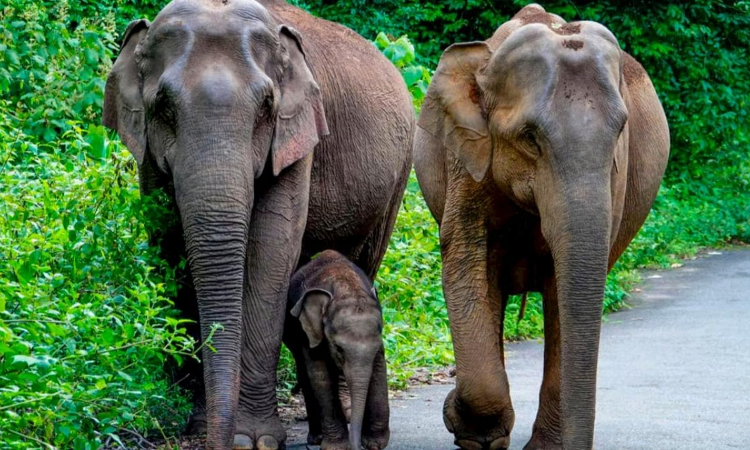- Home
- /
- High Courts
- /
- Kerala High Court
- /
- Kerala High Court Questions State's...
Kerala High Court Questions State's Inaction In Taking Measures To Address Human-Elephant Conflict Despite Orders, Calls Delay 'Appalling'
Anamika MJ
24 Sept 2025 9:20 PM IST
The Kerala High Court has pulled up the State government for failing to act with urgency in procuring equipment to tackle recurring human–elephant conflicts in Aaralam and Wayanad, despite clear directions issued over two months ago.A Division Bench comprising Justice Jayasankaran Nambiar and Justice Jobin Sebastian were hearing petitions concerning the human- wildlife conflict in Wayanad...
A Division Bench comprising Justice Jayasankaran Nambiar and Justice Jobin Sebastian were hearing petitions concerning the human- wildlife conflict in Wayanad and Aralam.
The bench observed that “adequate steps have not been taken” to safeguard lives and property of residents in Aaralam, where elephant incursions have become routine.
The Court pointed out that in its July 18, 2025 order, it had specifically directed the State to sanction and make available equipment listed in an official table, at an estimated cost of ₹1 crore. Yet, progress remained stalled.
“We are appalled by the delay,” the Bench remarked, noting that the executive ought to have treated the matter as an emergency under Section 50 of the Disaster Management Act, which empowers immediate procurement in disaster scenarios. The Court ordered that all equipment be procured and delivered to the relevant departments within two weeks, bypassing regular procurement processes.
“The situation cannot be permitted to continue,” the Bench warned, posting the matter after two weeks for compliance reporting.
The Court also examined various issues relating to Human-WildLife Conflict in Wayanad and Aaralam Farm. The District Collector, Kannur, District Forest Officer, Kannur, Member Secretary, Kerala State Disaster Management Authority were present online during the hearing.
The Court examined updates on fencing in Aaralam farm, where temporary structures erected have repeatedly been breached.
The District Collector informed the Bench that a plan was underway to replace the temporary fence with a permanent “hanging fence,” and estimates had been prepared. Petitioners, however, stated that continued clearance of undergrowth was necessary as otherwise there are chances for elephant incursion through the undergrowth.
The Court agreed, stressing that undergrowth clearance must be carried out “at the appropriate time” to prevent recurring incursions without harming forest regeneration.
Petitioners urged the revival of the 'Gaja Mukthi' programme, an inter-departmental initiative previously used to drive elephants back into forests which had proven to be effective. The Divisional Forest Officer (Kannur) assured the Court that coordinated drives would continue periodically.
Another major concern raised by the petitioner was the destruction of traditional elephant corridors in Wayanad following landslides at Mundakkai and Chooralmala. Petitioners submitted photographic evidence to demonstrate how a corridor linking the Meppadi region with the Nilambur forest had been severed, forcing elephants to enter human habitation zones like Chooralmala, despite Mundakkai being uninhabited.
“This is why corridors must be restored as part of the rehabilitation effort,” the petitioner argued.
The Court concurred, stating that restoration projects in Wayanad would otherwise be undermined by increased elephant incursions. It directed the Chief Wildlife Warden to develop a considered proposal on corridor restoration, which could then be linked to funding mechanisms.
The Kerala State Disaster Management Authority (KSDMA) confirmed that its Post-Disaster Needs Assessment (PDNA) report already contained a chapter on forest restoration. If the Forest Department submitted a viable plan, it could potentially be funded under PDNA or other mitigation schemes.
The petitioner also pointed towards the forthcoming paddy season in November-December, which would heighten the elephant incursion.
The petitioner recommended targeted fencing in paddy cultivation zones and even suggested deployment of the National Disaster Response Force (NDRF) for elephant deterrence.
The KSDMA, however, clarified that NDRF has a fixed mandate and lacks the skills or equipment to manage animal incursions. Instead, it suggested augmenting local Rapid Response Teams (RRTs) with civil defence and Athmavedi volunteers, who have already received training in other disaster scenarios.
The Bench directed that temporary watchers be recruited specifically for the paddy season, invoking Section 50 of the Disaster Management Act to bypass normal recruitment delays. Petitioners were also asked to provide names of willing volunteers to strengthen the local response.
The case is posted after 2 weeks for further consideration.
Case Title : Baiju Paul Mathews v State of Kerala and connected case
Case No : WP(C) 7858/ 2025 and connected case
Party in person.
Counsel for Respondents - T R Harikumar, Arjun Raghavan, Nirmal S, V Harish, Nagaraj Naryanan (Spl. Government Pleader (Forest))



